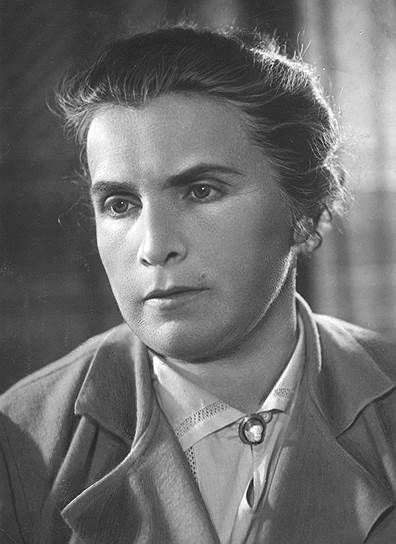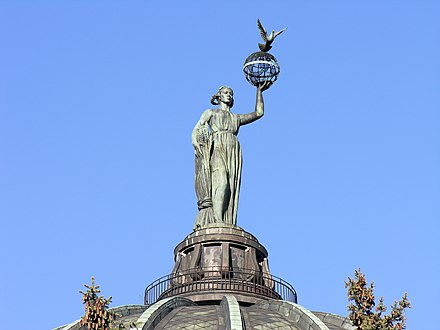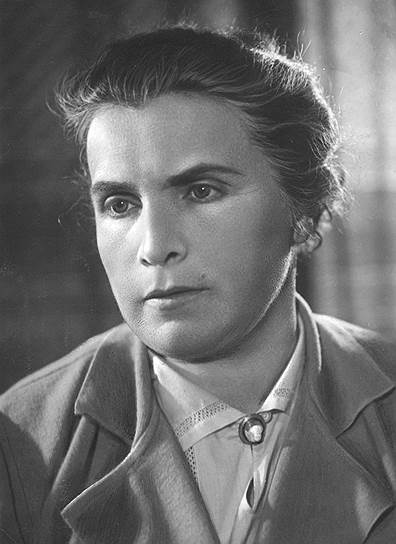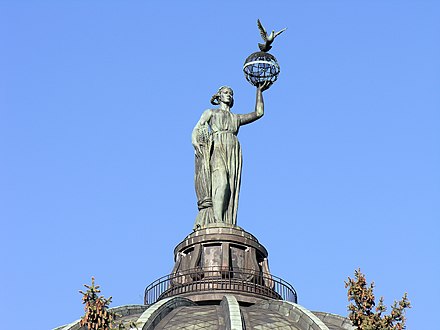
1889 - 1953
Vera Mukhina

description
A Russian sculptor-muralist, master of the portrait genre, as well as the author of innovative household plastics – vases, glasses, glass figurines.
The sculptor taught by prominent Russian and Parisian masters preferred the monumental genre and introduced some techniques of cubism and futurism into the sculpture. She became famous for her impressive monuments, the main of which is “Worker and Collective Farm Girl”, for which the author was awarded the Grand Prix at the International Exhibition in Paris. She also won the Venice Biennale.
Over the years, the artist was a member of the art associations “Monolith”, “Four Arts”, the Society of Russian sculptors, the “Team of Eight”, became an academician and got the title of People’s Artist of the USSR.
The sculptor created dozens of portraits of war heroes, scientists, artists, in which the image of outstanding people is realistic and emotional.
Vera Ignatyevna was awarded the USSR State Prize five times for individual works, orders and medals not only in her country. She taught at the sculptural faculties of several educational institutions, was an author of theoretical articles on monumental sculpture.
The Vera Mukhina Museum was opened in Feodosia, where she lived for a long time; a crater on Venus was named in her honour.
Key ideas:
– Vera Mukhina wrote, “Style will be born when the artist learns the ideals of his time, when he cannot feel otherwise and when the ideology of his people becomes his ideology”. In these words, she expressed the style of the country in which she lived.
– In her youth, Mukhina was impressed by the indefatigable temperament of O. Rodin, and he attracted her with the monumentality of his work. The general trends of creativity were pathos of power and greatness of scale, a tendency to volitional dynamics and the power of forms. These qualities made Mukhina a bright figure in Soviet official art.
– Her works are characterized by a metaphor of rapid impulse, overcoming and struggle – the hyperbolization of the physically tangible body mass, clearly developed great volumes came from there. As a result, they showed a balance of statics with a strong-willed effort, combined earthly heaviness and major enthusiasm with its transpersonal triumph.
– Throughout her life, Mukhina was interested in portraiture – she painted her relatives (her husband, A. Zamkov, his brothers and son), as well as outstanding people and heroes, most often in detail, without lyricism. However, a sense of holistic form allowed her to avoid excessive narration.
– Mukhina’s works became decorative when the author transformed her compositions into art glass. She gave an example of an innovative approach to the aesthetics of such household and interior objects as glasses, vases and figurines.
1889
1908
1911
1912
1914
1925
1927
1930
1937
1941
1945
1950
1953
Vera Mukhina was born into a wealthy merchant family
Studied painting at the studio of K. F. Yuon

She went to study at the less academic private school of I. Mashkov and I. Dudin

Studied sculpture at the Grande Chaumiere studio

After returning to Russia, she took courses and worked as a nurse of mercy at hospitals

She received the Grand-Prix in Paris for a collection of cheap and practical clothes

«The Peasant»

The family was exiled to Voronezh

“Worker and Collective Farm Girl”

Created sculptural portraits of ballerinas Semenova and Ulanova

Worked together with N. Zelinskaya and Z. Ivanova on the monument to M. Gorky in Moscow

Supervised the creation of the multi-figure composition “Demanding Peace”

The death of the artist

Vera Mukhina
On Artist
flow
Cubism
Futurism
Expressionism
Symbolism
Realism
Socialist realism
friends
Alexandra Exter
artists
Konstantin Yuon
Ilya Mashkov
Emil Bourdelle
Henri le Focognier
Ivan Dudin
V.N. Tregubov
Jean Dominic Anthony Metzenge
By Artist
flow
Expressionism
friends
Lyubov Popova
Ivan Dmitrievich Shadr
Nadezhda Udaltsova
artists
Nina Germanovna Zelenskaya
Alexander Uspensky
Nikolay Tyrsa
Sergey Kruglov
Ivan Semenovich Efimov
Alexander Sergeev
